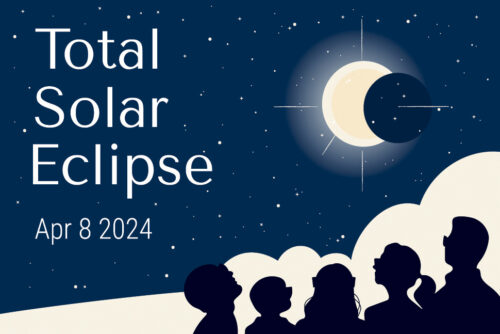On Monday, April 8, the United States will experience a total solar eclipse. The path of totality will enter the US in Texas and exit in far Northern Maine. I was able to speak with Marina Gemma, a planetary scientist and postdoctoral scientist at Stony Brook University and the research associate at the American Museum of Natural History.
AO. How did ancient people predict eclipses?
MG. I think it’s a combination of extremely careful observation over time, and seeing these repeating patterns. And then kind of drawing conclusions from them. And combining that with, you know, the mathematics and physics that these ancient peoples were developing to kind of painting a larger picture of how celestial motion works, and how they could predict these occurrences to happen over time.
AO. Do animals have a reaction to solar eclipses?
MG. A lot of us are so used to the celestial motion that we don’t really give them a second thought: the earth rotates every day, the moon moves through its phases every month. But when you’re plunged into something like a total solar eclipse, where your main source of light seems like it’s being taken away, humans have been able to put this into context and understand that this is an eclipse that’s happening, but animals don’t really have that knowledge. So I think people have observed them to have potentially adverse reactions to this unnerving solar event.
But for humans, it’s more of a strong reminder that we exist in this universe where things are happening beyond (our world). I think that’s kind of an exciting thing to be reminded of. And if you’re in totality, it’s really an otherworldly experience. You’re plunged into complete darkness after being in a bright, sunny day. And, you know, sometimes you can see stars during the daytime, which is something you never really would expect.
AO. How rare is an eclipse?
MG. I think people are surprised that eclipses actually happen all the time. It just depends where on earth you are to see it. Total solar eclipses are, I think, a bit rare. They happen on average every 18 months or so. But you can have I believe it’s two to five solar eclipses a year. And there are different types of eclipses. So there are partial solar eclipses annular, and total solar eclipses. With a partial, obviously, only a part of the Sun is covered. They happen quite often; you just have to be in the right spot on Earth to see them, and the Earth is 70 plus percent oceans.
AO. What observations are scientists hoping to make during the eclipse?
MG. The main thing that scientists get excited about during eclipses is that you can actually more easily observe the outer atmosphere of the Sun, called its corona. And this is hard to observe. Normally, just because the sun is so overwhelmingly bright, so it drowns out everything next to it. But when the moon moves in front of the sun, you actually can see this outermost atmosphere, and you can hopefully see activity happening on it. So the sun is actually getting close to the peak of what we call solar maximum which is the maximum of an 11-year cycle of magnetic field activity. Sometimes you can see flares or the detail of the outer atmosphere that you wouldn’t be able to see normally.
AO. Are there other places in our solar system that have these kinds of eclipses?
MG. In terms of a total eclipse, I think that is incredibly rare. Eclipses are generally happening all the time in the solar system. It just has to do with the alignment of planets. If you’re moving one in front of the other, you will have some form of an eclipse. But the fact that yeah, the moon and the sun are just the right size and the right distance away for us to have a total solar eclipse is truly unique. I think it’s a really, really special opportunity, just a complete coincidence, that the moon happens to be 400 times smaller and 400 times closer to us than the sun.































